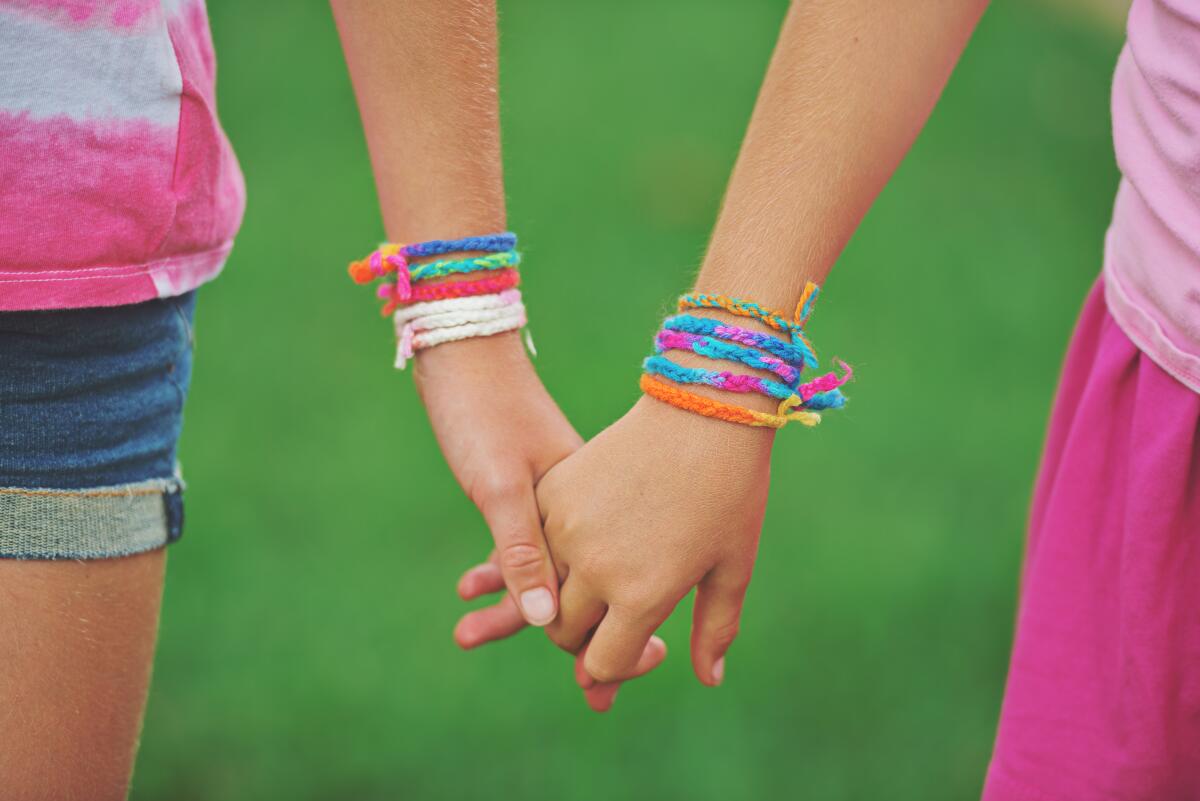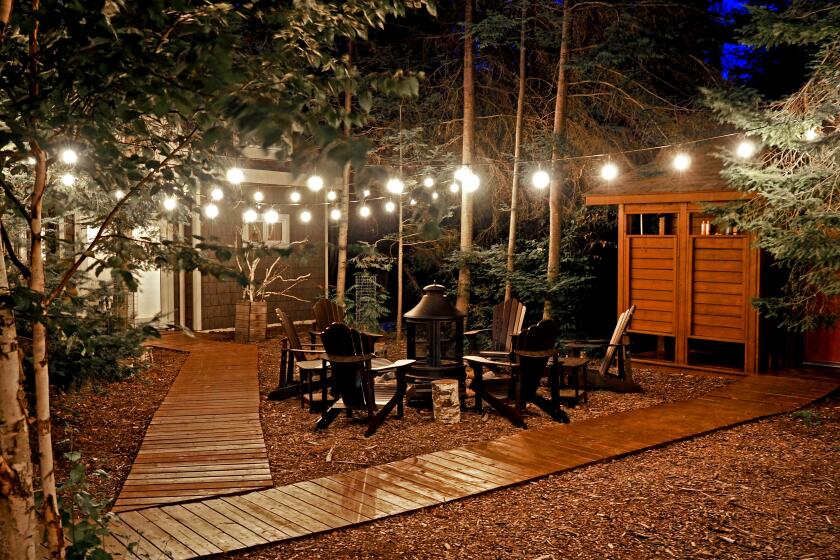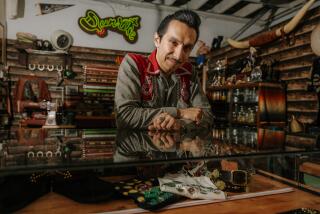Op-Ed: Friendship bracelets gave meaning to my childhood in a way my kids will never know

- Share via
Last month, I was sorting through a box of 30-year-old letters my friends had sent me while I was at summer camp when I came across a time capsule, in purple and green floss. Faded and frayed, it was a friendship bracelet — a staple of my teenage summers. Holding it in my hand made me think about those precious relics of childhood, and a rite of passage my kids will probably never know firsthand.
My obsession with those bracelets started in sixth grade when a girl in my class wore a “friendship bracelet” made by her cool, older cousin in the “city” (which was just a slightly less crummy town than ours). The other girls and I gathered around to gawk as if it were a trinket from Tiffany. Her bracelet had rainbow stripes and was tied so closely to the wrist that the wearer told us if she wanted to remove it she had to cut it off. This last detail was shared in a grim whisper, as if she were talking about severing off her hand.
At noon that day, every girl in my class rushed the craft section of the school library. We were all jockeying for the same handful of books, trying to divine how to weave one of those bracelets that had us all in a knot. Within a few days, one girl had mastered the technique. We watched her like faithful apprentices in a master class as we tried to copy her work. Soon we were all braiding, knotting, spending our allowances on embroidery floss and tying our creations on our friends’ wrists — always with the directive that they should be worn until they disintegrated because that was the sign of a real friendship.
My childhood was filled with happy summer vacation memories — despite the odds. They’ve come flooding back as my husband and I ponder buying a cabin.
My handiwork wasn’t beautiful. (A surgeon once told me my sutures were the worst he’d ever seen, so I have to assume my friendship bracelets weren’t MoMA material.) But what I remember is the beauty of the offering; slipping something onto a friend’s hand and knowing it would always be with them, until it wasn’t. The experience was intoxicating; physical and concrete, like the serious business of exchanging wedding rings, it signified an unbreakable bond.
Those bracelets were our lasting declarations of how much we meant to each other, at a time when our parents were moving to the sidelines and our friends were becoming the centerpieces of our lives.
I slept with my bracelets, showered with them, wore them on formal occasions. I’d wear at least 20 at any given time. I sported them all summer long at camp, pining for my friends and staking out the mail carrier as I waited for those letters I’d end up keeping for decades. And I acquired new bracelets from friends at camp — friends who received carefully crafted bracelets from me in return, as we said our tearful end-of-summer goodbyes.
Those bracelets were my transitional objects. I thought having them helped ease the pain of leaving my friends. But I see now that they were really helping me to leave behind childhood.
I don’t remember when I finally stopped wearing them. It might have been toward the end of high school, when they looked like kaleidoscope roadkill. Soon I was too old for summer camp and maybe too old for bracelets woven from thread. I must have cut them off or maybe they finally disintegrated and fell off on their own.
My kids don’t go to summer camp. They certainly don’t exchange anything as uncool as bracelets with their friends. They hang out on Discord in chats that only pause but never end. Our eldest son endlessly texts on his cellphone as he and his friends make one another memes, talking emojis and TikTok videos — and consume them in an infinite stream.
Their relationships with their phones leave no time or space for writing letters or making bracelets, and their gifts to one another leave no tangible traces. There will be no artifacts of their childhood summers, no boxes of letters to sort years from now nor any hidden bracelets to find. They will have files full of digital tokens but little to physically hold on to.
Growing up in a family with problems, my lifeline became Alan Alda’s Hawkeye on “MASH.” As a doctor fighting COVID-19, I channel his humor and rage.
One summer almost 10 years ago, my eldest son made me an offering. My husband and I had stopped at a yard sale, looking for anything that would placate three young children for a weekend. I picked up a cheap bracelet-making kit. When we got home, my son grabbed it and scurried off to the dining table. An hour later he called out to ask if I could help him tie a knot. He pointed shyly at what he’d made, his face a mask of pride. He’d beaded three words: I love mom.
I still wear that “I love mom” bracelet, along with the purple-and-green bracelet I found in that old shoebox and the Tiffany bracelet my husband bought me and had engraved with my first son’s initials soon after he was born. We grow, we outgrow, we grow up. Threads fray; some relationships change and disintegrate, while others will never be broken.
But be it at the end of summer or childhood, there is something to be said for things we can still hold onto, even though we learned to let them go.
Jillian Horton is a writer and physician. She is the author of “We Are All Perfectly Fine: A Memoir of Love, Medicine and Healing.” @jillianhortonMD
More to Read
A cure for the common opinion
Get thought-provoking perspectives with our weekly newsletter.
You may occasionally receive promotional content from the Los Angeles Times.











